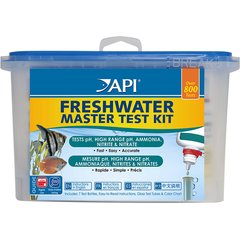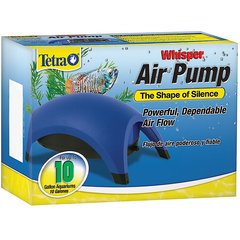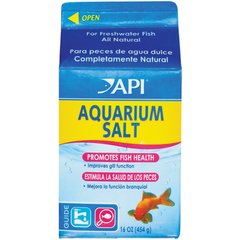Worms in Fish Tanks – Are They Dangerous to Fish?
Jessie M Sanders, DVM, CertAqV
When keeping aquarium fish, a lot of time and research goes into what is normal versus what is abnormal. It can be challenging to distinguish. Among these challenges are worms. What are they? Where do they come from? Are they dangerous to my fish and their environment?
Depending on your system and fish aquarium setup, sometimes worms are a normal, natural, and unavoidable occurrence. But other times they can be an indication that something is very wrong with the health of your system.
What is an Aquatic Worm?
Many an aquatic hobbyist is confused when they see a long, milky string coming from their fish’s anus. However, this is not actually a worm at all, but a normal gastrointestinal secretion. Just as mucus coats the feces of other animals, fish tend to pass mucus when they are not eating, or between large, infrequent meals. This worm-like structure is completely normal and is no cause for alarm.
True worms can be either parasitic or commensal, and internal or external. Parasitic worms act only in their best interest and at the expense of their hosts’ resources, whereas commensal worms either benefit their hosts, or have no effect on their host or environment.
Aquatic reptiles and amphibians are much different from fish, but they can also be infected with worms. They can contract the same internal and external parasites as their terrestrial cousins.
Types of Aquarium Worms
In aquariums, there are many types of worms that should be noted, from very basic flatworms to prickly bristle worms.
Trematodes - Flukes
The most basic of the worms are monogenean and digenean trematodes. These small worms can cause extreme irritation to the skin, gills, and eyes in fish. Commonly referred to as “flukes,” these parasites are guaranteed to be a problem at least once in any fish keeper’s career.
Flukes are microscopic, so they cannot be seen with the naked eye. If you have ever looked at your fishes’ skin mucus under the microscope, you probably have seen them.
Flukes exist in almost all systems in very small numbers, but do not always induce clinical signs of disease. Only when an individual or system is stressed do these small numbers rapidly multiply and spread throughout your tank or pond. Clinical signs of illness related to these parasites can include red, irritated skin, flashing behavior (rubbing against objects or walls in the tank), or bruises from flashing. These parasites are relatively easy to treat, but cannot be eradicated fully.
Crustaceans – Anchor Worms
Although they may be true crustaceans, individuals of the Lernea genus have been given the name “anchor worms.”
Another common parasite in the hobbyist community, the worm part that is visible to the naked eye is only the reproductive organs of this parasite. These crustaceans burrow deep into the fish’s muscle, resulting in large ulcers in many species of fish.
Anchor worms are very irritating to fish and can cause secondary infections. However, they are easily diagnosed and can be treated simply.
Aquatic vets usually combine treatment of the aquatic environment with manual removal of the worms while the fish is under sedation. This method will catch all reproductive adults and their offspring.
Annelids – Bristle Worms, Fireworms, Leeches
Most of the common worms people are familiar with are members of the annelid group. This group includes earthworms, polychaete worms, and leeches.
One of the most common residents in saltwater systems are bristle worms. Many a hobbyist has mistakenly stumbled upon these worms while cleaning out the tank substrate. How do you know bristle worms are in your tank? They sting! Bristle worms flare their bristles in defense, penetrating human skin and injecting a powerful neurotoxin, which produces intense irritation and a painful burning sensation at the site of contact. Their close cousins, the fireworms, hurt even more.
The good news is that the more common bristle worms will not hurt fish in any way. They are mostly just a problem for the caretakers. Fireworms, however, are known to attack invertebrates.
Any chemical treatments that would work on bristle worms and fireworms could also negatively affect the many helpful organisms in a marine system. The best way to get rid of bristle worms and fireworms is to cut off their food supply. Most bristle worm infestations are secondary to overfeeding. The excess fish food that sinks to the bottom of the tank becomes the main food source for worms lurking in the substrate. Cutting off leftovers is the best treatment for any bristle worm infestations.
Leeches are another problematic group within the annelids. These suckers will attach themselves to the side of a fish or to the inside of their mouths, where they secrete an anticoagulant (blood thinner) that can significantly affect fish health. They are found in both freshwater and marine systems.
Although adult leeches are easy to see and manually remove, life cycle (i.e., potential offspring) considerations should be taken with any treatment protocol.
Cestodes - Tapeworms
Internal cestode parasites, such as tapeworms, are significantly harder to diagnose in fish. Active passing of cestode segments in the feces can be very difficult to see. More commonly, failure to thrive or gain weight is the most frequent sign of infection. Positive diagnosis of cestode infection can only be made with a fresh fecal microscopic exam.
Water-based treatments do not work well against internal cestodes. A prescription for a food-based medication is best and can be obtained from your aquatic veterinarian.
Nematodes – Hookworms, Roundworms
One of the largest group of worms, the nematodes contain a variety of parasitic, commensal, and zoonotic worms that can all potentially affect aquatic animals. This contains the genera Ancylostoma, Uncinaria, Bunostomum, and Toxocara.
Many aquatic invertebrates can be involved in the nematode life cycle. It is important to understand how these many components can be involved in parasite life cycles.
Larval migrans, a disease characterized by the migration of larval stages of nematodes, aka hookworms, within all body tissues, can cause significant disease in humans and other animals.
Treating Your Aquarium for Parasitic Worms
Your first step is to check with a trained professional who can make the correct diagnosis. When treating for potential parasite issues of any kind, it is always best to make sure that you actually have a real parasitic problem rather than treating for something that “looks funny.”
Reaching for any over the counter (OTC) worm treatment may make the problem worse. And using any antibacterial product for a parasitic infection is irresponsible and can breed antibiotic resistant organisms. Overuse of treatments is a very widespread problem in the aquatic industry, a problem that can be easily solved by working with a professional specifically trained to work with aquatic systems.
Preventing Parasitic Aquatic Worms
When dealing with potential parasitic organisms, prevention is always key. However, no aquatic system is immune to worm invasion. It is impossible, in fact, to guarantee that any system is worm-free. The best thing any fish caretaker can do is to properly quarantine all new, sick, or injured fish, and to stimulate a fully functioning fish immune system with proper water quality, an appropriate environment, and good nutrition.
Quarantining all new additions, be they fish, invertebrate, or plant, will help prevent the spread of worms. 4-6 weeks in a completely separate system will allow you to observe any disease processes.
If you are unsure about the health of animals being purchased, question your aquatic provider about their safe quarantine practices. If they do not have any quarantine or biosecurity protocols in place, or are unwilling to share any of that information, seek out another source.
Reference
Meyers, BJ. 1970. Nematodes transmitted to man by fish and aquatic mammals. J Wildl Dis. 6(4):266-71.




